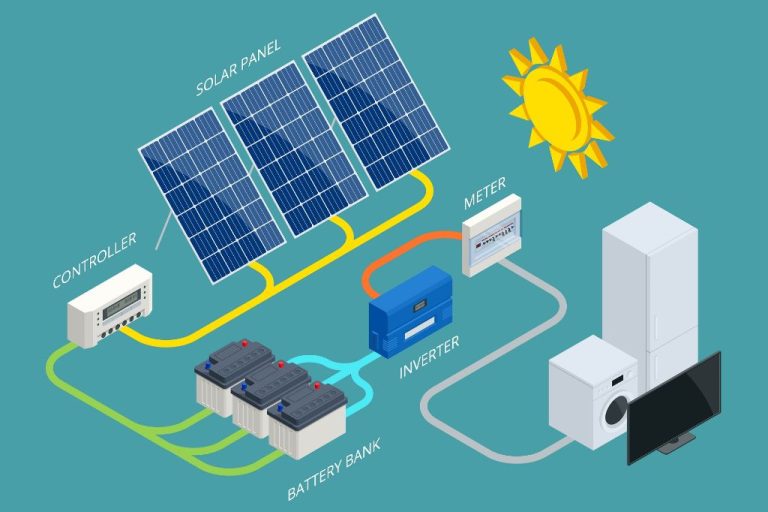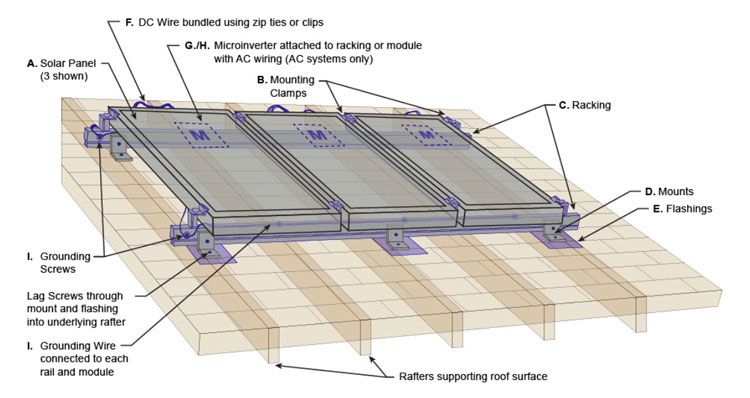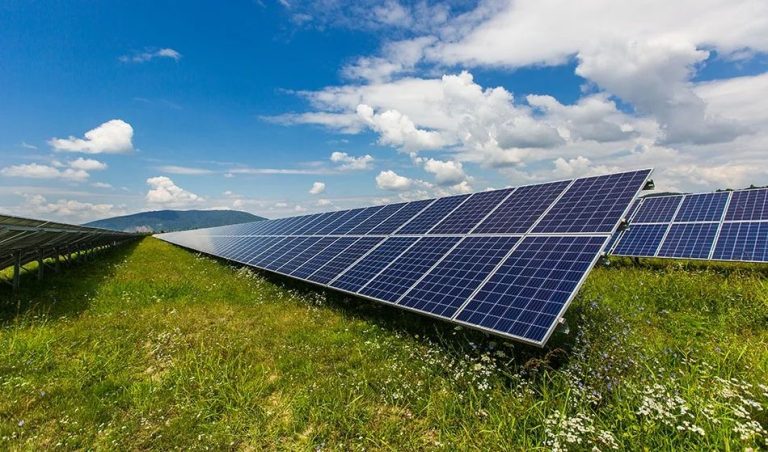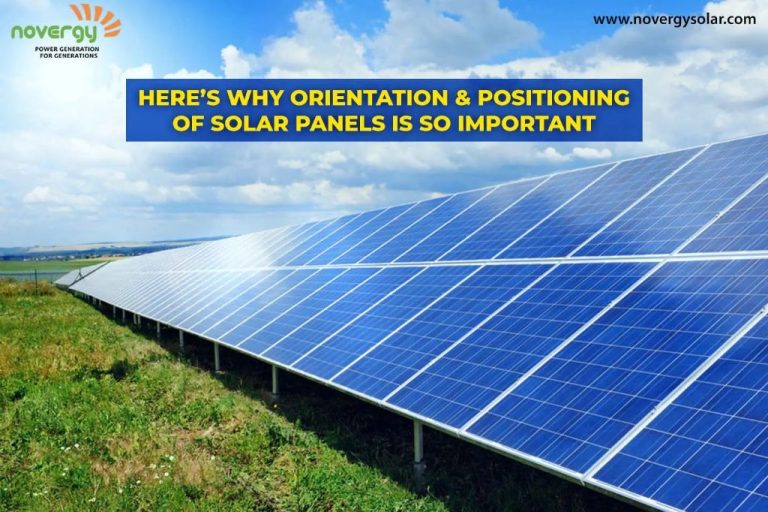How Is Solar Energy Made?
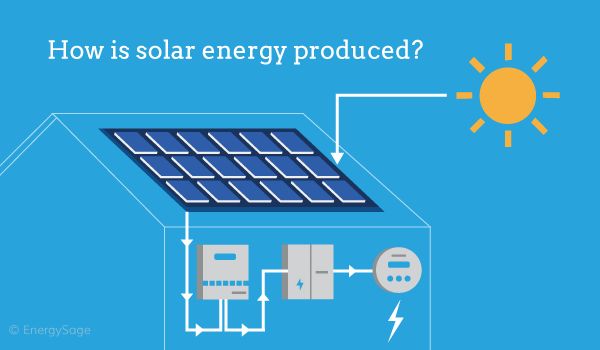
Solar energy is the radiant light and heat from the sun that is harnessed using a range of technologies such as solar photovoltaic panels, solar hot water systems, and concentrated solar power plants. Solar energy is a renewable and clean energy source that can help reduce reliance on fossil fuels, mitigate climate change, and provide energy access to remote areas (Solar Energy Facts Blog). With solar panel prices falling dramatically over the past decade, solar energy is becoming an increasingly affordable and viable energy option for homeowners and businesses.
The development of solar energy is important for several key reasons: it can reduce greenhouse gas emissions from fossil fuel power plants, diversify and decentralized energy supply, provide energy access to off-grid areas, and stimulate the economy through growth of the solar industry and jobs (Conservation Institute). Solar energy has the potential to provide a substantial share of global energy demand with minimal environmental impacts. This makes solar an important piece of the transition to sustainable energy systems.
How Solar Panels Work
Solar panels, also known as photovoltaic (PV) panels, convert sunlight directly into electricity using the photovoltaic effect. PV panels are made up of many individual solar cells, which are made from semiconducting materials like silicon [1]. When sunlight hits these solar cells, the energy from the photons of light knocks electrons loose in the semiconductor material, allowing them to flow freely and generate an electric current [2].
The photovoltaic effect causes the creation of positive and negative charges in the solar cells. The negatively charged free electrons want to flow towards the positive charge, and when the electrons move, they generate electricity. Metal conductive plates on the solar cell collect the electrons and transfer them to wires, allowing us to draw power from the cells. Essentially, the photovoltaic effect allows solar panels to absorb sunlight and convert it directly into usable DC electricity.
Types of Solar Panels
There are a few main types of solar panels used in solar energy systems today:
- Monocrystalline solar panels – Made from single crystalline silicon, these are the most efficient but also most expensive panels. They have a distinctive black color and uniform look. (1)
- Polycrystalline solar panels – Made from multi-crystalline silicon, these are slightly less efficient but cheaper than monocrystalline panels. They have a speckled blue color and non-uniform look. (1)
- Thin-film solar panels – Made by depositing one or more thin layers of photovoltaic material onto a substrate, these panels are less efficient but can be cheaper and more flexible than crystalline silicon panels. Types of thin-film solar panels include cadmium telluride (CdTe), copper indium gallium selenide (CIGS), and amorphous silicon (a-Si). (2)
These solar panel technologies differ in how they are manufactured, their efficiency levels, appearance, and costs. Selecting the right solar panel type depends on factors like available space, budget, local weather conditions, and more.
(1) https://www.energysage.com/solar/types-of-solar-panels/
(2) https://aurorasolar.com/blog/solar-panel-types-guide/
Manufacturing Solar Panels
Solar panels are primarily made from silicon, the most common semiconductor used in electronics. The manufacturing process for solar PV panels involves multiple steps:
First, polysilicon is produced by heating sand until it melts and forms into ingots of 99.9999% pure polysilicon [1]. The ingots are then sliced into thin wafers about 0.2mm thick using wire saws or lasers.
The silicon wafers are then processed with chemicals like phosphorus to impart a negative electrical charge. An anti-reflective coating may also be applied to maximize absorption of sunlight. The wafers are now considered solar cells.
Several solar cells are then connected together and encapsulated between a transparent top layer of glass or plastic and a backing material to form a complete solar panel module. The solar cells are connected together to generate a desired voltage and power output.
Finally, the solar panels are tested for safety and correct electrical performance, then assembled into arrays and shipped out for installation [2]. Automated manufacturing helps lower costs and maximize solar panel efficiency.
Installing Solar Panels
The process of installing rooftop and ground-mount solar panels involves several key steps:
Site assessment – The installation location is evaluated, including the roof or ground area, orientation to the sun, and potential shading. This determines the solar potential and what size system can be accommodated.1
Mounting system installation – For rooftop systems, racking is attached to the roof to securely mount the panels. For ground mounts, the racking structure is anchored into the ground.
Panel installation – The solar panels are mounted to the racks and wired together. Wiring is run from the panels to the point where the inverter and other electrical components will be located.
Inverter and component installation – The inverter, fuse box, and any other systems are installed and connected to the solar panels.
Electrical connection – The system is connected to the home’s electrical panel and utility grid (for grid-tied systems). Any net metering equipment is installed.
Permitting and inspection – Permits are obtained and inspections conducted by the local permitting office to ensure proper installation and safety.
Once the solar panels are installed and operational, minimal maintenance is required, primarily clearing any debris like leaves from the panels and checking connections.
Connecting to the Grid
After a solar energy system is installed, it needs to be connected to the electrical grid to start generating usable electricity. There are two main ways to connect solar panels to the utility grid:
The first approach is called a “load side” connection. This taps into the home’s electrical system after the utility meter and main service panel. An inverter converts the solar panel’s DC output into 120/240-volt AC power that can be used to run appliances and electronics in the home. Any excess solar energy gets fed back into the grid, spinning the home’s electrical meter backwards. This is known as net metering. (Source)
The second method is a “line side” or “supply side” connection made before the main service panel and utility meter. The solar energy system ties directly into the grid so all the electricity first flows through the utility meter. This allows any excess solar power to be directly sold back to the utility company. Special safety considerations are required for line side connections. (Source)
In both setups, the grid essentially acts as a battery, storing solar energy during the day and supplying additional electricity at night when solar panels aren’t actively producing power. This allows solar systems to reliably meet a home’s or business’s complete energy needs.
Solar Energy Storage
One of the key challenges with solar energy is that it is intermittent – solar panels only produce electricity when the sun is shining. However, energy storage solutions allow solar energy to be captured and stored for use at night or on cloudy days. The most common way to store solar electricity is in batteries.
Lithium-ion batteries have become the dominant battery technology for home solar energy storage [1]. Lithium-ion batteries have high energy density, which allows them to store lots of energy in a relatively small battery. They also have a slow loss of charge when not in use. Popular lithium-ion batteries for solar storage include the Tesla Powerwall and the LG Chem RESU.
Lead-acid batteries provide a more economical option for solar storage [2]. While lead-acid batteries are larger and heavier, they cost much less upfront. Lead-acid batteries need to be replaced more frequently than lithium-ion, but can still effectively store solar energy for nighttime use.
Flow batteries are an emerging storage technology for solar energy [3]. Flow batteries store energy in external tanks of liquid electrolyte. This makes it easy to scale up storage capacity just by increasing tank size. Flow batteries can also last for decades with minimal degradation.
Battery storage enables solar panel systems to provide power around the clock. Families and businesses can benefit from solar energy even when the sun isn’t shining. With grid connectivity, excess solar electricity can also be sent back to the grid during sunny hours for credit.
Solar Thermal Technology
Solar thermal systems use the sun’s heat energy to provide renewable heating and cooling solutions. There are two main technologies used to capture the thermal energy from the sun:
Solar water heating systems work by using solar collectors, usually roof-mounted panels, that absorb heat from the sun. This heat is transferred to water which flows through the collector. The heated water is then stored in a hot water tank ready for use. These systems provide a sustainable way to heat water for domestic or industrial use. (https://www.energysage.com/about-clean-energy/solar/solar-thermal-what-you-need-to-know/)
Concentrated solar power (CSP) systems use mirrors or lenses to concentrate a large area of sunlight onto a receiver. The concentrated sunlight heats a thermal transfer fluid in the receiver to very high temperatures. This heat energy is then used to generate electricity through a steam turbine or heat engine. CSP provides a clean way to produce utility-scale solar power. (https://science.howstuffworks.com/environmental/green-tech/energy-production/solar-thermal-power.htm)
Solar thermal captures heat energy from the sun and avoids the complex electronics needed for photovoltaic solar panels. The simple and reliable technology provides renewable energy for water and space heating applications.
Concentrated Solar Power
Concentrated solar power (CSP) systems generate solar power on a large scale by using mirrors or lenses to concentrate a large area of sunlight onto a small area (like the end of a rod). The concentrated light is converted to heat, which drives a heat engine (e.g. steam turbine) connected to an electrical power generator or powers a thermochemical reaction.
There are mainly four types of CSP systems:
- Parabolic trough systems use long, U-shaped mirrors to focus sunlight on a receiver tube that runs along the focal line of the trough. A fluid heated in the tubes drives a steam turbine or heat engine.
- Power tower systems use thousands of flat, movable mirrors (called heliostats) to focus sunlight onto a central receiver tower. The receiver contains a fluid that is heated to a high temperature.
- Linear Fresnel reflector systems use long, thin segments of mirrors placed at different angles to concentrate sunlight onto tubes through which a fluid runs.
- Parabolic dish systems use a mirrored dish similar to a satellite dish. The dish concentrates sunlight onto a thermal receiver, which absorbs and transfers the heat to an engine generator.
Compared to flat plate photovoltaic systems, CSP can more easily incorporate thermal energy storage to provide continuous power generation even when the sun is not shining. However, CSP requires direct sunlight and large amounts of land.
The Future of Solar
There are many exciting innovations in solar technology emerging that could dramatically change how we generate and use solar power in the future. For example, solar roads and highways with solar panels built into them may become a reality. Prototypes like the SolaRoad in the Netherlands show the potential of roads and highways generating electricity from the sun. While technical and cost challenges remain, there are several pilot projects testing this concept around the world (https://energy.mit.edu/research/future-solar-energy/).
Similarly, solar windows that can generate electricity from solar cells embedded in the glass are also advancing. Ubiquitous Energy is one company making transparent solar cells that allow windows to produce power. This opens up possibilities for integrating solar generation seamlessly into buildings and cars in the future (https://arka360.com/ros/future-of-solar-energy-predictions/).
There are also major improvements being made to solar cell efficiency and new technologies like perovskite solar cells that promise to make solar even more cost effective and efficient. Concentrated solar power and solar thermal technologies are also progressing, providing ways to not just generate electricity but also store and utilize solar heat energy. Overall, the future looks very bright for solar, with projections that solar could generate up to 40% of U.S. electricity by 2035 as costs continue to fall and new technologies enable wider adoption.
In conclusion, the innovations explored here, from solar roads to efficient solar windows and new solar cell materials, demonstrate the huge potential and rapid progress being made in solar technology. There are likely many more advances still to come that will continue to transform how we harvest and utilize the abundant power of the sun.

